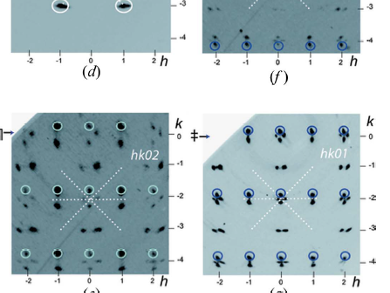The crystal structures of many metals at high pressures show unexpected complexity. The structural model used has a great influence on the interpretation of high-pressure induced phenomenon. Classical structure descriptions sometimes can not describe the correct atomic arrangements. Barium is an example of structural complexity. Precise structural characterizations of high-pressure Ba phases are missing or incomplete.
Gervais Chapuis, École polytechnique fédérale de Lausanne (EPFL), Switzerland, and colleagues collected single-crystal diffraction data from Ba IVb phases at pressures from 16.5–19.6 GPa using synchrotron radiation. They described the data with the host-guest composite (COMP) model and, for the first time, the incommensurately modulated structure (IM) model. An advantage of the IM model is that it can generate a unified and consistent series of structural models of the same or other components at different pressures. This makes it a suitable tool for structure predictions.
The researchers found that the absence of specific diffraction intensities, previously explained by a postulated one-dimensional “chain melting” effect, can better be explained by the disappearance of satellite reflections leading to the recovery of full 3D periodicity by increased pressure.
This work provides insights into the complex structure of high-pressure barium. According to the researchers, it can be extended to other elemental phases at extreme conditions and shows that high-quality single crystal data collection, accurate and detailed analysis of the diffraction data, and reliable structure refinements are essential to improve our knowledge of high-pressure structures.
- Incommensurate atomic density waves in the high-pressure IVb phase of barium,
Alla Arakcheeva, Maxim Bykov, Elena Bykova, Leonid Dubrovinsky, Phil Pattison, Vladimir Dmitriev, Gervais Chapuis,
IUCrJ 2017.
DOI: 10.1107/S2052252517000264




